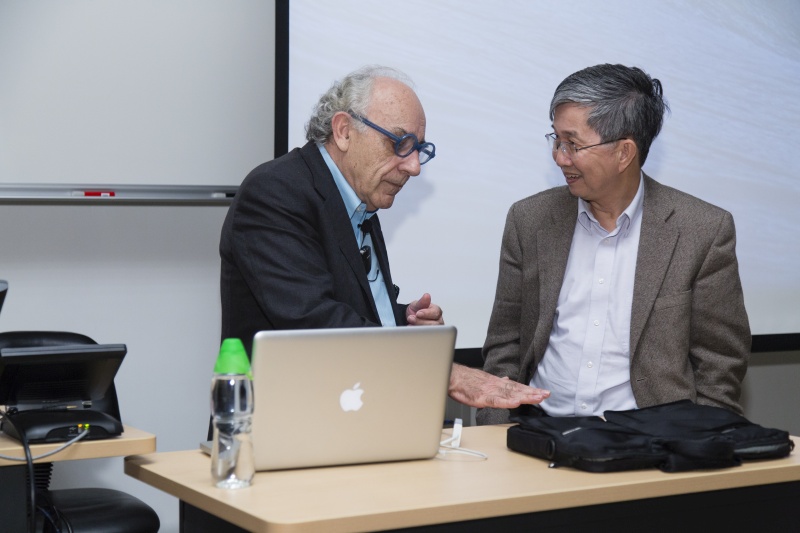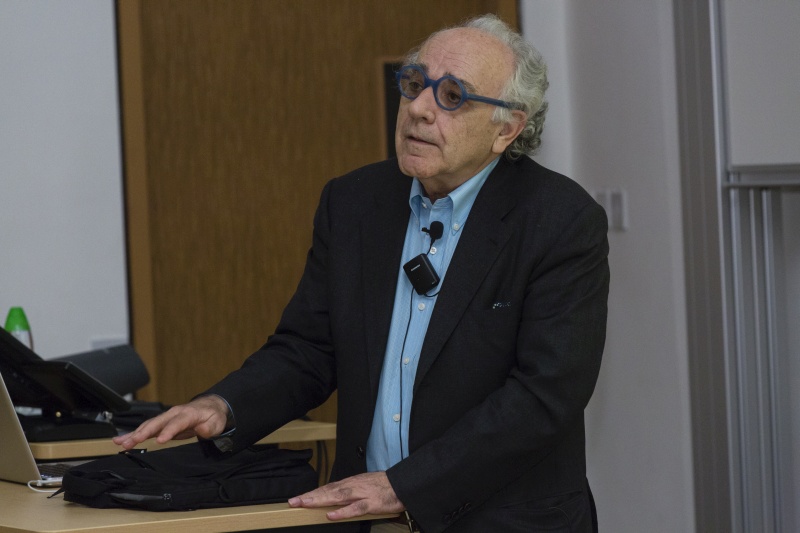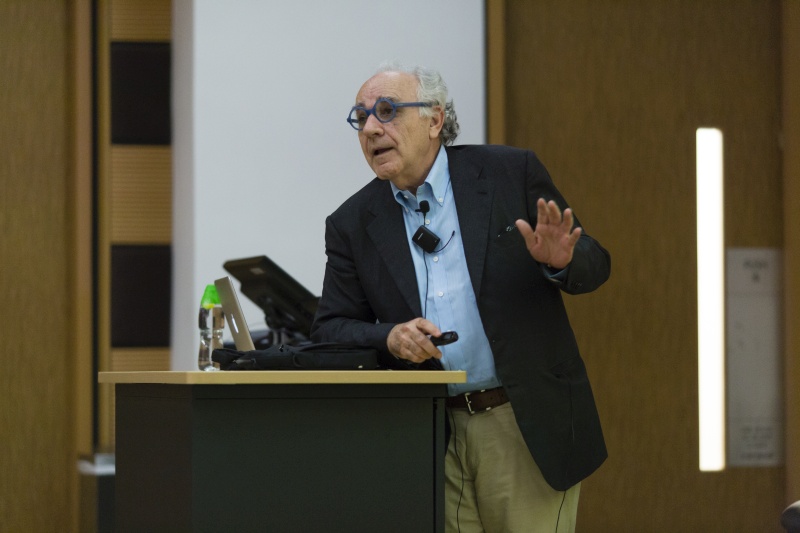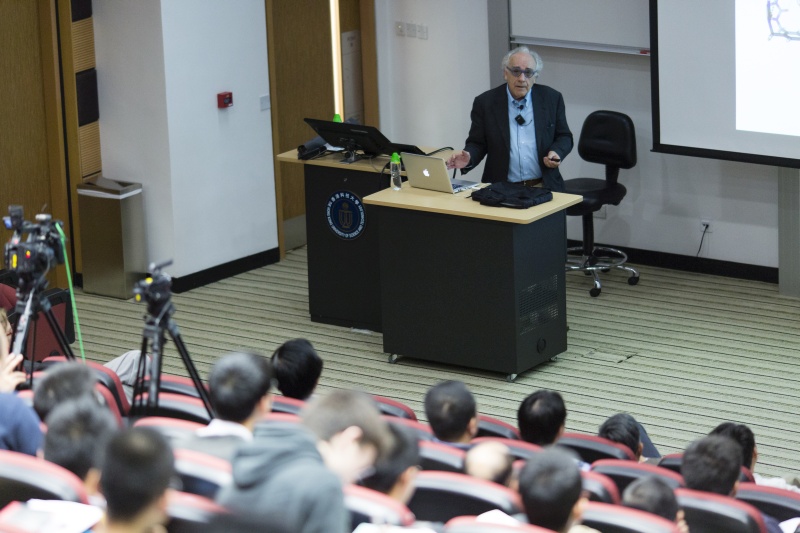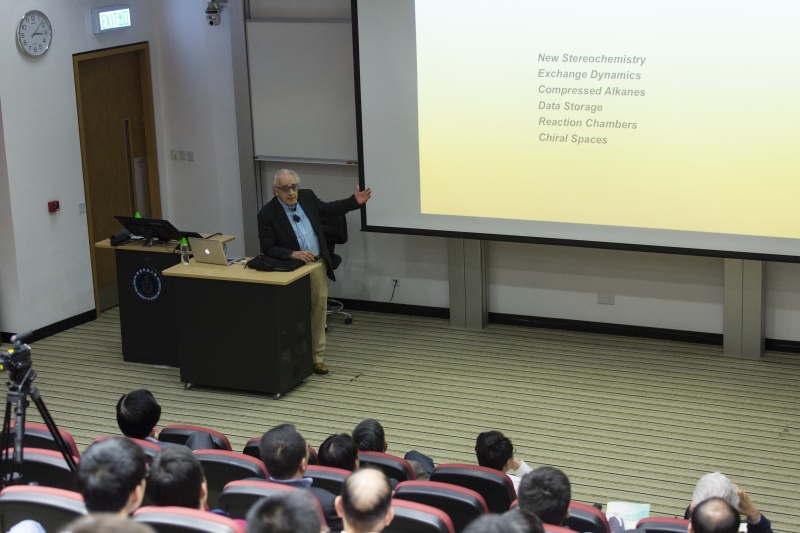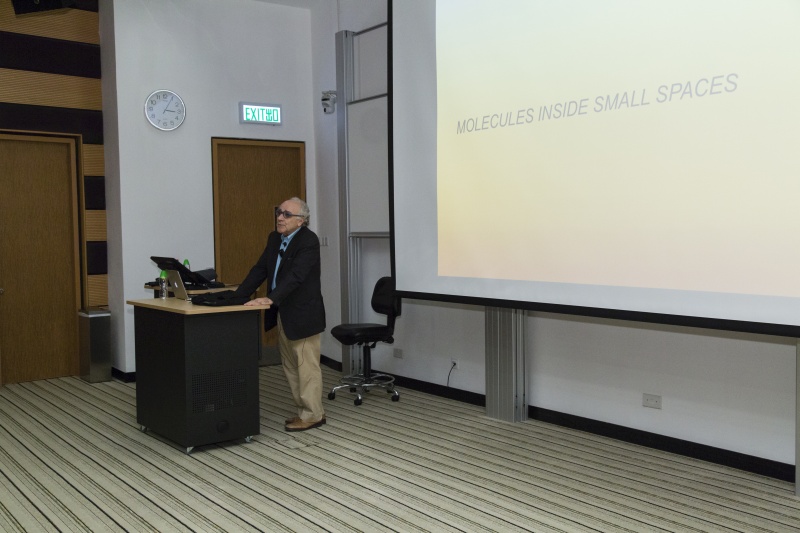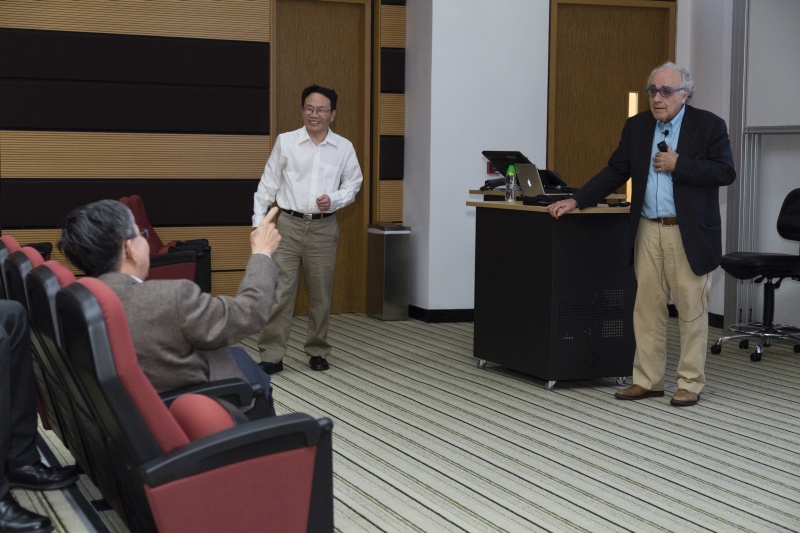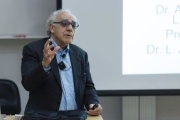Molecules Inside Small Spaces
Abstract
Molecules can be temporarily and more or less completely surrounded by other molecules in arrangements known as nanocapsules. The capsules assemble spontaneously, range in size from 50 to 1500 Å3 and have lifetimes from milliseconds to hours. This lecture describes what it’s like inside these capsules, how molecules get in and out and the forces that hold them together.
About the speaker
Prof. Julius Rebek Jr. received his PhD in Organic Chemistry from the Massachusetts Institute of Technology (MIT) in 1970. He was Assistant Professor at the University of California at Los Angeles from 1970 to 1976, where he developed the three-phase test for reactive intermediates. In 1976 he moved to the University of Pittsburgh and became Professor of Chemistry and developed cleft-like structures for studies in molecular recognition. In 1989 he returned to the MIT, where he was the Camille Dreyfus Professor of Chemistry and devised synthetic, self-replicating molecules. In 1996, he moved his research group to the Scripps Research Institute, and is currently the Director of the Skaggs Institute for Chemical Biology, where he continues to work in self-assembling systems and the sensing and destruction of nerve agents.
Prof. Rebek’s research interests focus on studies in molecular recognition and catalysis, molecular self-assembly and encapsulation, sensors and antidotes for chemical warfare agents and protein surface mimetics.
Prof. Rebek received numerous awards including the NIH Merit Award, the A. von Humboldt Senior Scientist Award, the A.C. Cope Scholar Award and Nichols Medal from the American Chemical Society, etc. He is a Member of the US National Academy of Sciences and Academia Europaea, and a Fellow of the Royal Society of Chemistry, the American Academy of Arts and Sciences and the American Association for Advancement of Science.

